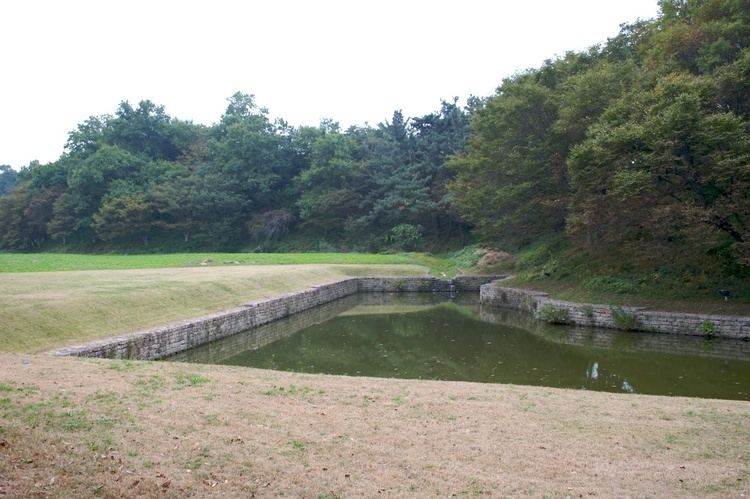Hangul 경주월성 (반월성, 신월성) Province North Gyeongsang Province | Hanja 慶州月城 (半月城, 新月城) Phone +82 61-779-6061 | |
 | ||
McCune–Reischauer Kyŏngju Wŏlsŏng (Panwŏlsŏng, Sinwŏlsŏng) Address 387-1 Inwang-dong, Gyeongju, Gyeongsangbuk-do, South Korea Similar Gyerim, Donggung Palace and Wolji Pon, Cheomseongdae, Hwangnyongsa, Gyeongju Seokbinggo | ||
Fish near banwolseong gyeongju korea
Banwolseong (半月城, literally “Half Moon Fortress”), also commonly known as Wolseong Palace, was the royal palace compound of the Korean Silla monarchy at their capital in Gyeongju during the Silla and Unified Silla periods (57 BCE-938 CE). It takes its name from the approximate outline of the palace walls which were shaped like a crescent moon. Banwolseong has been also known as Sinwolseong or Jaeseong, which means where the king resides.
Contents
Features
Today the ruins of the palace, set among lush forests and hills, can still be visited and is part of the Gyeongju Historic Areas, a UNESCO World Heritage site. The South Korean government has also designated the palace ruins as Historic Site No. 16. Other notable sites nearby include the Anapji Pond which is northwest of the ruins and Gyeongju National Museum.
The fortress was built by King Pasa (4 A.D.-24 A.D.) to protect the royal palace. The palace had many structures including the north and south gates, Guijeongmun, Hyeondeokmun, Mupyeongmun, Wolsangnu pavilion, Mangeunnu, and Goru. Jowonjeon was where the governmental affairs were discussed. Namcheon River flows along the south wall and provided a natural barrier of protection. The site of Imhaejeon Hall and other structures were also near the river.
According to legend, a man named Hogon lived on the site of the future fortress and was chased away by a youth Talhae who had magical powers. King Namhae, impressed by the story, took Talhae as his son-in-law. Talhae eventually became king.
Treasure No. 66, Seokbinggo, is a famous icehouse. It is 2.4 meters in width, 1.78 meters in height, and 18.8 meters in length. The entrance is located in the south and three ventilation ducts were built in the arched roof. The floor is angled in an incline so that melting ice water flows toward the floor. Originally the ice storehouse was in the west of Wolseong but has been moved to its present location near the northern castle turret. The icehouse was used during the Joseon Dynasty. Records inscribed on stone state that Jo Myeonggyeom replaced the older wood ice storage house with one made of stone during the reign of King Yeongjo and then moved the icehouse to the west of Wolseong. The storage facility is considered important for its architectural technique and the magnitude of the structure.
The oldest icehouse in Korea was built in 505 under the reign of King Jijeung.
